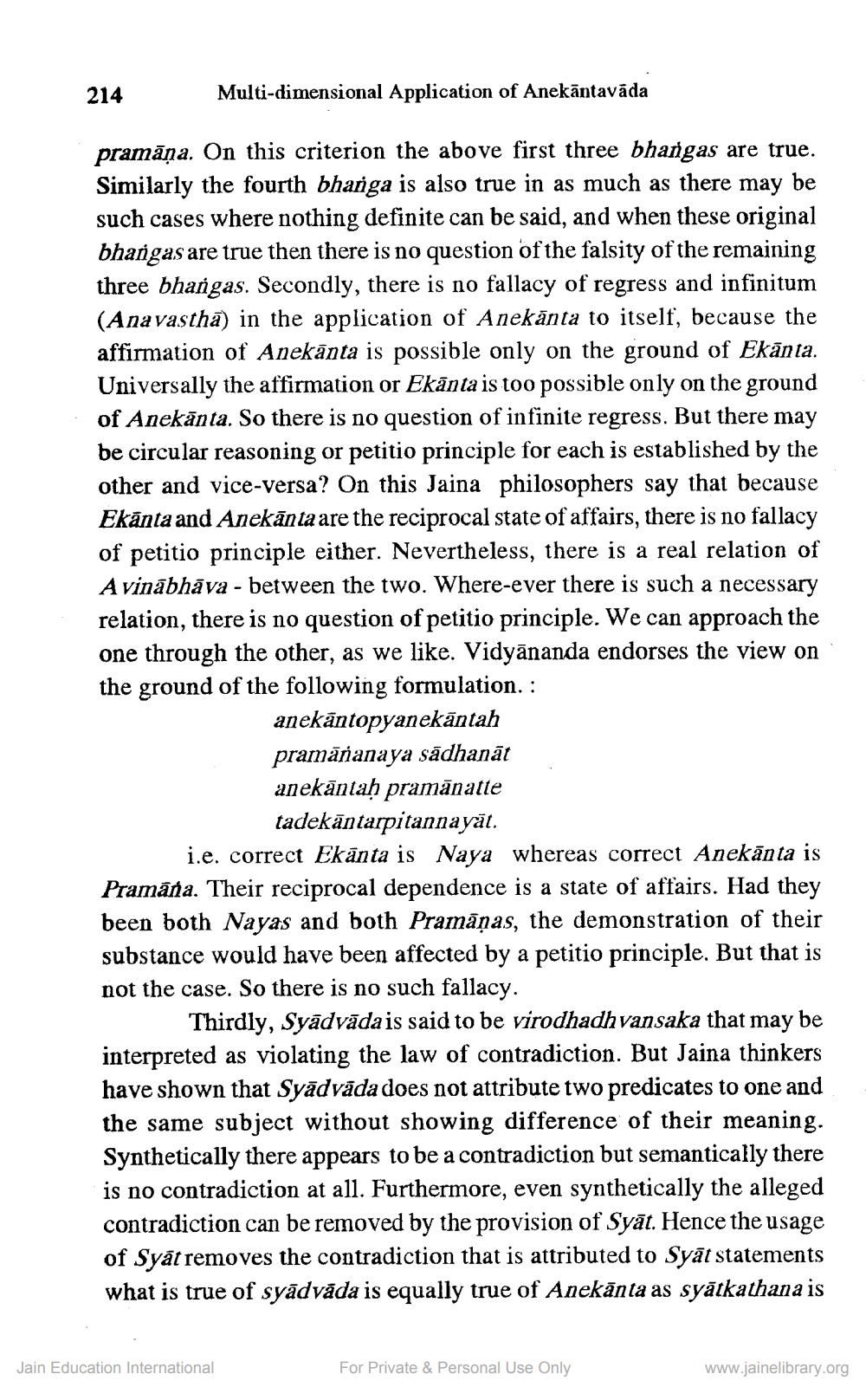________________
Multi-dimensional Application of Anekantavāda
pramāṇa. On this criterion the above first three bhangas are true. Similarly the fourth bhanga is also true in as much as there may be such cases where nothing definite can be said, and when these original bhangas are true then there is no question of the falsity of the remaining three bhangas. Secondly, there is no fallacy of regress and infinitum (Anavastha) in the application of Anekanta to itself, because the affirmation of Anekānta is possible only on the ground of Ekānta. Universally the affirmation or Ekänta is too possible only on the ground of Anekanta. So there is no question of infinite regress. But there may be circular reasoning or petitio principle for each is established by the other and vice-versa? On this Jaina philosophers say that because Ekanta and Anekanta are the reciprocal state of affairs, there is no fallacy of petitio principle either. Nevertheless, there is a real relation of A vinābhāva - between the two. Where-ever there is such a necessary relation, there is no question of petitio principle. We can approach the one through the other, as we like. Vidyananda endorses the view on the ground of the following formulation. :
214
anekāntopyanekāntah pramānanaya sadhanāt anekāntaḥ pramānatte
tadekāntarpitannayāt.
i.e. correct Ekänta is Naya whereas correct Anekanta is Pramana. Their reciprocal dependence is a state of affairs. Had they been both Nayas and both Pramanas, the demonstration of their substance would have been affected by a petitio principle. But that is not the case. So there is no such fallacy.
Thirdly, Syadvāda is said to be virodhadhvansaka that may be interpreted as violating the law of contradiction. But Jaina thinkers have shown that Syadvāda does not attribute two predicates to one and the same subject without showing difference of their meaning. Synthetically there appears to be a contradiction but semantically there is no contradiction at all. Furthermore, even synthetically the alleged contradiction can be removed by the provision of Syat. Hence the usage of Syat removes the contradiction that is attributed to Syat statements what is true of syādvāda is equally true of Anekānta as syātkathana is
Jain Education International
For Private & Personal Use Only
www.jainelibrary.org




